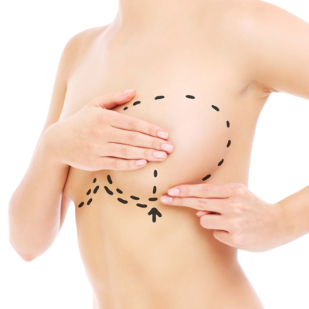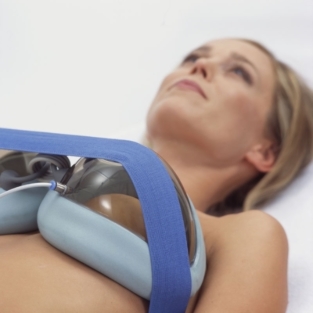
Breast ptosis or sagging is an aesthetic problem that worries many women. Adds self-doubt to himself and his sex life.
If a woman is worried about this and is embarrassed in front of her husband or boyfriend, it is worth trying to lift her breasts.
This procedure should not be confused with breast augmentation with implants. The lift aims to eliminate ptosis by giving a woman's breasts a natural elasticity.
What is this procedure and what is it called?
Breast augmentation is called mastopexy.The procedure involves reshaping the mammary glands, giving them a natural elasticity and an attractive appearance without the use of implants. The operation is performed under local or general anesthesia with minimal surgical intervention.
Plays an important role in choosing the degree of ptosis. There are 4 degrees of the disease. Appropriate measurements are taken to make an accurate diagnosis. The degree of sagging is determined by the distance from the breast to the nipple.
Help!Ptosis is stage 1, 2, 3 and 4 and is measured by the distance from the breast to the nipple. A 1-2 cm drop is not critical and belongs to the 1st class.
Grade 4 ptosis is diagnosed if the nipple is 8 cm or more above the chest layer. Here, surgeons will have to cut large amounts of skin and fatty tissue, and this would be impossible without general anesthesia.

Reads
The skin on the chest is sensitive to any changes in the body. There is no natural muscle frame at the bottom to maintain its shape. Therefore, it is difficult to maintain its original form throughout life.The reasons for changing the form are:
- A sharp increase or decrease in weight.After losing weight, the skin on the chest loses its elasticity and looks soft.
- Large breast size.3D breasts sag under natural weight.
- Changes in hormonal background.Deficiency or excess of hormones causes breast swelling or "deflation".
- Operations. For example, when a malignant tumor is removed, the glands become asymmetric. In severe cases, the mammary gland empties and shakes.
- Age.Without muscle support, the chest loses its elasticity before the rest of the body.
- Incorrectly installed bra.If not supported enough, the mammary glands sag prematurely.
- Breastfeeding.Milk-filled mammary glands can grow 3-5 times. When breastfeeding is over, it returns to its original size, not its shape.
- Congenital anomalies.Breasts can't develop properly from puberty. The only way out is to correct the form.
Another problem with sagging breasts is that they are usually accompanied by stretch marks and sagging skin.
Contraindications
Mastopexy involves surgery on the body. Each operation has its own indicators and contraindications. Such an operation is not specified in some cases:

- pregnancy or planning, because all the results of the operation will disappear;
- How long the mammary glands need to recover after lactation less than 12 months after the end of hepatitis B;
- presence of tumors in the chest area;
- acute infectious diseases;
- diabetes mellitus;
- kidney failure;
- cardiovascular dystonia;
- under 18 years of age (parental consent and emergency medical care required); Obesity is a consequence of metabolic diseases and can lead to postoperative complications.
Before deciding on mastopexy, positive and possible negative outcomes should be measured.
Views
Breast augmentation can be done with or without surgery.In the first case, the method of tissue extraction is used according to different schemes, the second is the effect on the deeper layers of the skin. It should be noted that non-surgical methods are best used to prevent ptosis or in the early stages. Surgical interventions help solve the problem in more advanced cases.
Endoscopic
Small areas of skin are cut laterally.Endoscopes and instruments are introduced through them. The tissue is removed from the inside, so the operation will be invisible once the scars have healed.
This is one of the most expensive types of mastopexy. The success of this procedure depends on the qualifications and experience of the doctor performing the operation. But the result will remain unchanged for 10-15 years. Endoscopic mastopexy can eliminate ptosis to any degree.
Periareolar (circular)
During thisoperation, the doctor cuts the excess tissue around the areola.In this way, in addition to squeezing the mammary glands, you can also change the diameter of the nipple. Postoperative and post-healing scars become invisible.
Among the disadvantages of this work is the potential impact on breastfeeding. Also, only 1 and 2 degree swings are used. After the operation, some patients reported loss of nipple sensitivity.
Dikey

During surgery,, the surgeon makes incisions over the breast and along the edges to lift the nipple.This method requires minimal intervention in the structure of the mammary glands and practically does not cause complications and preserves the natural shape of the breast. It can also help shrink the nipple.
This method is used in the early stages of ptosis. Cannot be used if there are already scars on the chest. It will also not help with severely sagging breasts.
Anchor (T-shaped)
Indicated for large breasts that cause severe ptosis or discomfort. Duringsurgery, an anchor or inverted T is made in the chest.The surgeon then cuts the excess tissue and pulls the bottom up.
The operation has a significant aesthetic effect and can be repeated until the patient is satisfied with the result. Among the disadvantages are the large number of incisions applied. This increases the duration of rehabilitation and can lead to complications.
Laser
This is a relatively new type of breast lift. It is widely used in the West, but there are few clinics in our country equipped with the necessary equipment.The laser can be used to lift and enlarge breasts.You don't need a scalpel to do this.
Laser removal is effective in the early stages of ptosis. It takes about 6 treatments to get the desired effect. It is carried out with an interval of at least 14 days. The procedure is painless and does not require anesthesia. In some cases, unpleasant feelings may arise.
Mesothreads
If a breast loses its previous elasticity and causes a woman internal discomfort, doctors recommend a mesothreads implantation procedure. It does not leave marks on the skin and has no complications.
In the mammary glands,threads gradually grow into adipose tissue and have a supportive effect.The ropes last for 6-8 months, after which they are completely mastered and do not need to be removed.

Non-surgical methods
Women with grade 1 sagging are recommended to use non-surgical breast augmentation techniques. Helps restore skin elasticity and restore mammary glands to their former shape:
- Myostimulation - with the help of electrical impulses sent through the combined electrodes, the elasticity of the skin is restored and stretch marks are removed.
- Lipolifting - the transfer of adipose tissue from the abdomen and inner thighs to the problem areas of the chest. Guarantees 100% adipose tissue injection.
- Serum microcurrents - stimulate the active production of elastin and collagen, accelerate cell renewal, reduce stitches and stretch marks.
- Mesotherapy.
The choice of lift type is also influenced by the degree of elongation, asymmetry and size of the breast skin. The surgeon will assess the general condition and select the safest and most effective option for each individual situation.
Preparing for plastic surgery
Before obtaining permission from a surgeon for breast augmentation,should consult other specialists: gynecologist, therapist, mammologist and anesthesiologist.You will have to pass a number of tests:
- general and biochemical blood test;
- blood test for diabetes mellitus;
- general urinalysis;
- analysis for hepatitis, HIV, syphilis;
- ECG;
- Breast ultrasound;
- mammography;
- fluorography.
You should not smoke, drink alcohol, or take blood pressure medications, including oral contraceptives, for 14 days and at the same time before surgery. You should also avoid strenuous physical activity. No food should be eaten 12 hours before surgery immediately before surgery. You can drink tea or water.
How is it done, is it dangerous?

How is the operation performed?Mastopexy is safe.It starts with a breast sign. The surgeon marks the incisions and skin areas with a marker. Then the patient is given anesthesia. There can be several types:
- intravenous;
- breathing;
- local.
Mastopexy stages:
- the surgeon makes incisions along the marks;
- creates a more end result and cuts off excess skin and adipose tissue;
- If necessary, the surgeon reduces the area around the nipple;
- After that, sutures and antibacterial dressings are applied, drains are placed (you can read more about what stitches are and how much they heal after surgery).
Operating time is between 1, 5 and 3 hours.
What happens in the postoperative period?
- The patient recovers immediately after surgery.Chest pain begins as you recover from anesthesia. The surgeon should advise on painkillers and antibiotics to be taken in the postoperative period. 3 days after mastopexy
- the patient is observed in the hospital.If there are no complications, he is released. The doctor should evaluate the main result, that is, whether the stitches begin to tighten and whether there is asymmetry. After a week, the stitches are removed.
- Edema is observed in the first week after surgery.The chest looks like a stone. In the first month, the swelling persists, bruises may appear. They disappear completely after 1-3 months, you can evaluate the result. During this time, the stitches will heal completely, edema and hematomas will be reduced.
- Corrective underwear should be worn for the first six months to help maintain shapeUse ointments that accelerate skin renewal. This will help you get through the rehabilitation period faster.
- Also, you should not visit the bath or sauna for 6 months after the operation to avoid infection of open sutures. It is forbidden to go to the gym and lift weights - it helps to separate the seams.
Patients who decide to have mastopexy should also be aware of possible complications. These include pain in the mammary glands, bruises and hematomas, swelling at the incisions, tissue inflammation and loss of sensation.
Before and after photos

In the photo below, you can see what a large breast looks like before and after lifting.
The cost of the procedure
The cost of the service depends on the type of operation, the characteristics of the surgeon and staff, the condition of the clinic. The price includes an educational program, the purchase of corrective underwear, patches, anesthesia.
Mastopexy is an opportunity for every woman to rediscover her sexuality and attractiveness. But before you decide to take a serious step, you should research the information about this operation, compare the advantages and possible risks, and only then make a final decision.
Mammoplasty is a type of surgery to correct the shape and size of the breast. The specialist changes the contour, volume, shape of the nipples and areolas of the mammary glands.


























